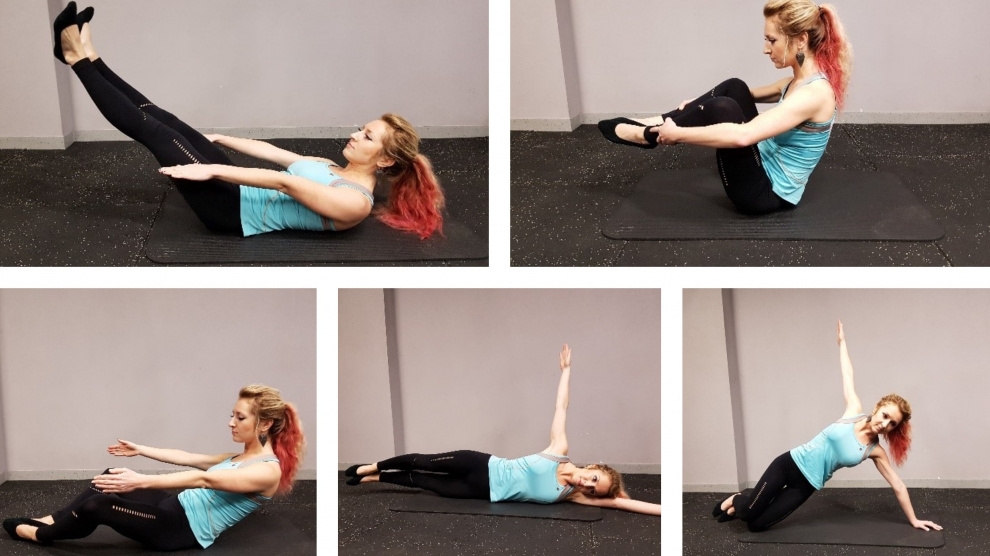Lithuanian scientists have devised an exercise programme for managing lower back pain that could bring an end to years of misery for office workers. After carrying out tests on 70 volunteers, the researchers claim that the exercise programme is not only efficient in diminishing non-specific lower back pain, but that its effects last three times longer than those of a standard muscle strengthening exercise programme.
According to the World Health Organisation, lower back pain is among the top 10 diseases and injuries decreasing the quality of life across the global population. It is estimated that non-specific lower back pain is experienced by 60 to 70 per cent of people in industrialised societies. Moreover, it is the leading cause of activity limitation and work absence throughout much of the world. For example, in the United Kingdom, lower back pain causes more than 100 million lost workdays per year.
Chronic lower back pain, which starts from long-term irritation or nerve injury, can also cause anxiety and even depression, as well as nausea, tachycardia, and elevated arterial blood pressure.
With a significant part of global population working from home as a consequence of restrictions put in place to combat the spread of Covid-19, and not always having access to a properly designed office space, the occurrence of lower back pain is on the increase.
“Lower back pain is reaching epidemic proportions,” says Dr Irina Klizienė, researcher at Kaunas University of Technology (KTU) Faculty of Social Sciences, Humanities and Arts. “Although it is usually clear what is causing the pain and its chronic nature, people tend to ignore these circumstances, and are not willing to change their lifestyle. While lower back pain usually goes away itself, the chances of the pain recurring are very high.”
Dr Klizienė, together with colleagues from KTU and from the Lithuanian Sports University, has designed a set of stabilisation exercises aimed at strengthening the muscles which support the spine. The exercise programme is based on Pilates methodology.
According to Dr Klizienė, the stability of lumbar segments is an essential element of body biomechanics. Previous research evidence shows that in order to avoid lower back pain it is crucial to strengthen the deep muscles, which stabilise the lumbar area of the spine.
The programme designed by Dr Klizienė and her colleagues is comprised of static and dynamic exercises, which train the muscle strength and endurance. The static positions are to be held from six to 20 seconds; each exercise to be repeated eight to 16 times.
In order to check the efficiency of the programme, 70 female volunteers were randomly enrolled either to the lumbar stabilisation exercise programme, or to a usual muscle strengthening exercise programme. Both groups exercised twice a week for 45 minutes for 20 weeks. During the experiment, ultrasound scanning of the muscles was carried out.
Although both sets of exercises were efficient in eliminating lower back pain and strengthening the muscles in the lower back area, the effects of the stabilisation exercises lasted three times longer – 12 weeks after the completion of the stabilisation programme against four weeks after the completion of the muscle strengthening programme.
“There are only a handful of studies which have directly compared the efficiency of stabilisation exercises against other exercises in eliminating lower back pain”, says Dr Klizienė, whose research was published in Clinical Biomechanics. “However, there are studies proving that after a year, lower back pain returned only to 30 per cent of people who have completed a stabilisation exercise programme, and to 84 per cent of people who haven’t taken these exercises. After three years these proportions are 35 per cent and 75 per cent.”
According to Dr Klizienė, research demonstrates that the spine stabilisation exercise programme is more efficient than medical intervention or usual physical activities in curing lower back pain and avoiding the recurrence of the symptoms in the future.
—
Unlike many news and information platforms, Emerging Europe is free to read, and always will be. There is no paywall here. We are independent, not affiliated with nor representing any political party or business organisation. We want the very best for emerging Europe, nothing more, nothing less. Your support will help us continue to spread the word about this amazing region.
You can contribute here. Thank you.



Add Comment